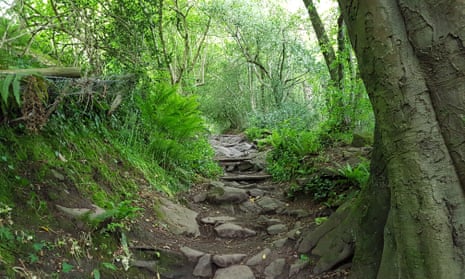Walkers are being urged to help identify 10,000 miles of historic footpaths that are missing from the map in England and Wales and could be lost for ever.
All rights of way must be identified before a government deadline of 2026, after which it will no longer be possible to add old paths to the official record.
The walking group Ramblers is calling on walkers, historians and map enthusiasts to use its new mapping site to identify missing footpaths.
The online tool divides the official map into 150,000 1km squares so users can compare historic and current maps side by side, spot any differences and submit missing paths.
Once mapped, Ramblers will recruit volunteers to make applications to restore paths to local authorities before the 2026 deadline.
Jack Cornish, the project’s manager, said: “Our paths are one of our most precious assets. They connect us to our landscapes – ensuring we can explore our towns and cities on foot and enjoy walking in the countryside – and to our history and the people who formed them over the centuries.
“If we lose our paths, a little bit of our past goes with them. This is our only opportunity to save thousands of miles of rights of way and time is running out.”
Some lost paths are still in use, while others have become overgrown, but all were omitted from the “definitive” maps of 140,000 miles of paths that councils were required to draw up in the 1950s.
Some walkers are already applying to local authorities to recognise lost paths but fear there are many more than the government’s estimate of 10,000 miles: a survey in Cornwall alone identified 3,000 paths that had fallen out of use.
Paul Howland discovered a lost path called The Markway, in Hampshire, which ends abruptly in some undergrowth. The path was temporarily blocked during the second world war and by the time it was reinstated in 1956 it was overgrown and forgotten.
Howland has calculated that in his area he would need to make two applications a week to register all the paths before 2026.
Under English common law, rights of way do not expire but the Countryside and Rights of Way Act 2000 required all rights of way to be recorded. The Ramblers is calling on the government to extend the deadline for registering historic paths by at least five years.
